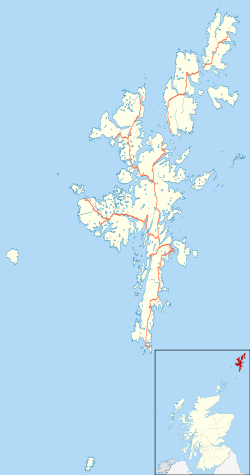| Voe | |
|---|---|
 Voe at the head of Ronas Voe, Northmavine | |
Location within Shetland | |
| OS grid reference | HU333811 |
| Civil parish | |
| Council area | |
| Lieutenancy area | |
| Country | Scotland |
| Sovereign state | United Kingdom |
| Post town | SHETLAND |
| Postcode district | ZE2 |
| Dialling code | 01806 |
| Police | Scotland |
| Fire | Scottish |
| Ambulance | Scottish |
| UK Parliament | |
| Scottish Parliament | |
Voe is a settlement on the Northmavine peninsula of Mainland, Shetland, Scotland. [1] It is at the head of Ronas Voe and just off the A970 road.
